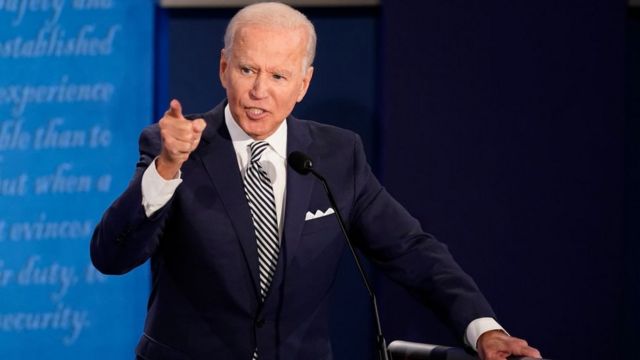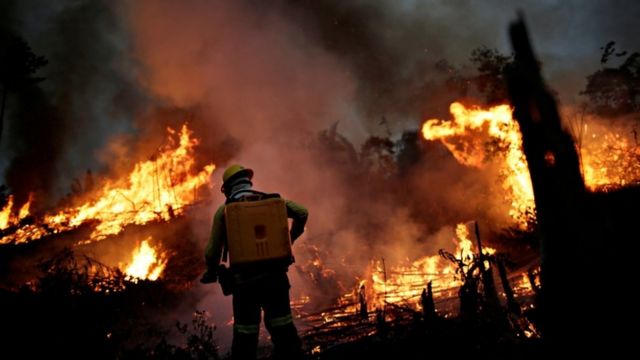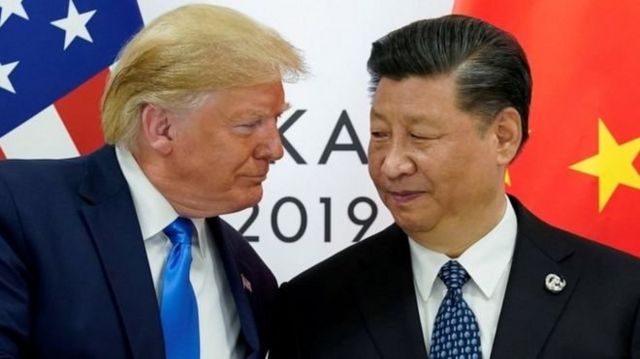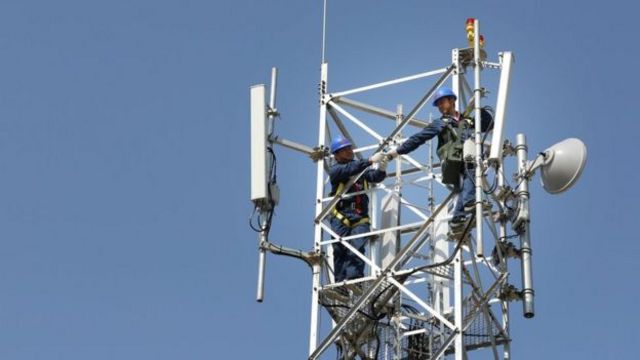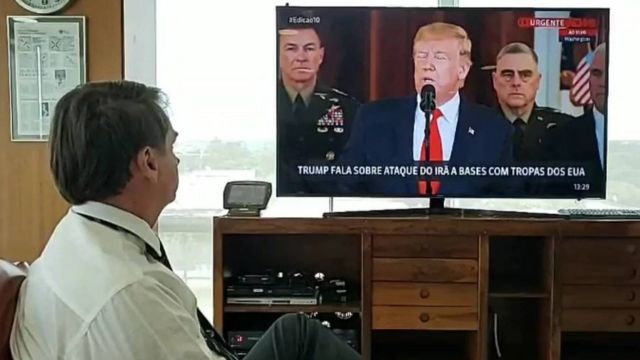The New York Times – 14.11.2021
It’s Time to Get Honest About the Biden Doctrine
Anne-Marie Slaughter
A year after President Biden’s election, we’re beginning to see the contours of his foreign policy: He has something for everyone. For balance-of-power realists, he has countered China by working much more closely with “the Quad” — India, Australia, Japan and the United States — and creating a new British, Australian, U.S. nexus with the AUKUS submarine deal, no matter how clumsily handled.
For liberal internationalists, he has re-engaged with global institutions: rejoining the World Health Organization and the U.N.-sponsored Paris Agreement to limit climate change and recommitting to NATO. For those advocating “restraint” in America’s military might, he has ended at least the visible “forever wars.”
And for democracy and human rights activists committed to a values-based foreign policy, Mr. Biden will be hosting a Summit for Democracy next month. The administration has also ratcheted up both its rhetoric and its actions on human rights issues, accusing China of both genocide and crimes against humanity for its treatment of its Uyghur population and authorizing sanctions against several officials responsible for the war and humanitarian crisis in Ethiopia.
Yet when everyone gets something, no one gets everything, which is why the core principles of Mr. Biden’s worldview have been hard to pin down.
Not for lack of trying, however. Richard Haass, president of the Council on Foreign Relations, argues that Mr. Biden is continuing many of Donald Trump’s “America First” policies in a different guise. Joshua Shifrinson, a Boston University professor, and Stephen Wertheim, senior fellow at the Carnegie Endowment for International Peace, claim that the Biden Doctrine is “pragmatic realism,” pursuing U.S. interests “in a competitive world” and changing course as necessary to achieve them.
On the values-based side of the foreign policy ledger, a growing number of observers insist that the real Biden Doctrine is to preserve and prove “the supremacy of democracy” worldwide. As Jonathan Tepperman, former editor in chief of Foreign Policy, argues, the “global contest between democracies and autocracies” provides an “organizing principle” to link investing in infrastructure and industrial policy at home, pursuing a foreign policy for the middle class and working to build coalitions of democracies abroad.
Perhaps Mr. Biden is perfectly comfortable with multiple “Biden Doctrines.” He might say that reconciling conflicting impulses and brokering compromises is his trademark as a politician who knows how to get things done.
The problem is that swinging from one framework and set of goals to another without a set of clear principles and priorities risks falling radically short of the progress that the world needs on existential issues. What difference does it make whether the United States “beats China” if our cities are underwater, the Gulf Stream stops warming northern Europe and the United States, and hundreds of millions of climate refugees are on the move? If we destroy the biodiversity on the planet? If millions more people die from serial pandemics? If people the world over do not have the means to flourish and care for one another?
It is time to break free of 20th-century thinking. Two decades of Mr. Biden’s 50-odd years in public life were spent during the Cold War and a third during the 1990s with the United States as a hyperpower. For most of this period great-power competition and making the world safe for democracy were fused. “People” issues were relegated to human rights advocates and development experts. Diplomacy and defense were the provinces of nations and the field of international relations.
The frameworks, paradigms and doctrines of that era, of any kind, are simply insufficient to meet the challenges of the 21st century. Bolder thinking is required, thinking that shifts away from states, whether great powers or lesser powers, democracies or autocracies. It is time to put people first, to see the world first as a planet of eight billion people rather than as an artificially constructed system of 195 countries and to measure all state actions in terms of their impact on people. Instead of competing with China today on one issue and cooperating tomorrow on another, Mr. Biden must prioritize cooperation on global issues and challenge other nations, regardless of whether they are democracies, autocracies or something in between, to join in.
This approach is known as globalism, which has a bad name because of its association with globalization. But globalism is actually closer to localism, to beginning with people, where they live and what they need, regardless of what colored square on the map they happen to be born in. It is a people-centered rather than a state-centered approach to problem-solving on a global scale. It does not pretend that governments don’t exist or don’t matter, but rejects the idea that interstate rivalry matters as an end in itself — the essence of geopolitics.
Government officials as a set of actors can contribute to either global problems or global solutions. To succeed as problem solvers, however, they must work side by side with global corporations and networks of cities, civic groups, faith groups, universities, scientists and others. These actors are not just “helpers” or catalysts or constituents. They are players in global politics.
Mr. Biden sometimes seems to be moving in this direction. His speech to the U.N. General Assembly in September laid out a long list of global problems, from health and climate change to inequality and corruption. In my view, his greatest foreign policy achievement to date was to secure a minimum global corporate tax rate of 15 percent, ensuring that corporations worldwide pay at least a portion of their fair share for the public goods — from roads to intellectual property laws — that they rely on and that benefit all citizens. The Biden administration also embraces an “all of society” approach to fighting climate change.
Time and again, however, Mr. Biden’s other goal — of beating China, or more broadly of lining up the democracies to beat the autocracies — gets in the way. This week, thanks to the work of John Kerry, the climate envoy, the United States and China reached an important agreement to cooperate on deeper cuts to both carbon dioxide and methane emissions. It’s not enough, however, and misses a larger opportunity to mobilize the United States, China, the European Union and India as co-leaders on a global climate challenge.
The lure of competition — often on the edge of conflict — with a rival superpower is just too strong, both for Mr. Biden and for the tight-knit band of brothers who form the core of his foreign policy team. Secretary of State Antony Blinken and Jake Sullivan, the national security adviser, are veterans of the Obama administration’s “pivot to Asia,” a concept designed and advanced in large part by Kurt Campbell, now the White House Asia czar.
From the perspective of 20th-century geopolitics, it makes sense for the Biden administration to approach its relationship with China as one in which the United States has many different goals: economic, military and diplomatic. On some issues, like climate or health, we seek China’s cooperation. On many more, like military primacy, freedom of navigation in the South China Sea, fair trade, intellectual property rights, cybersecurity and human rights, our relationship requires competition and coercion. Hence we have the frequent trade-off debate, in which China hawks have demanded that Mr. Kerry not give an inch to get concessions on Chinese emissions or to encourage other actions that are necessary to stop the globe from warming another degree.
From a people-first perspective, saving the planet for humanity must be a goal that takes precedence over all others. The United States should openly challenge China to a competition to see which country can deliver the cleanest and safest environment for its people while at the same time increasing their well-being. Which country can build and deploy clean technologies the fastest? Which country can help the most developing countries upgrade their infrastructure and wean themselves off carbon?
It should be possible to develop common measures to assess the climate impact of China’s Belt and Road investments versus the Build Back Better World initiative — a project of the Group of 7 wealthiest economies — and the E.U.’s Global Gateway investments and to agree on a set of nongovernmental organizations charged with applying and publicizing these metrics.Global youth movements, from the Sunrise Movement in the United States to the China Youth Climate Action Network and Greta Thunberg’s followers everywhere, would be ideal candidates.
When it comes to the Covid-19 pandemic, if our collective goal really is to vaccinate and treat as many people as possible worldwide, then it’s time to ignore geopolitics. Back in September, the Biden administration’s global vaccine summit brought together over 100 governments and an additional 100 global actors to commit to vaccinating 70 percent of the world’s people by 2022. China has said that it is now working with 19 nations to produce vaccines and cooperating with another 30 countries on vaccine distribution through the Belt and Road Initiative. Indeed, President Xi Jinping of China proposed a Global Vaccine Cooperation Action Initiative at the Group of 20 summit last month, without an apparent response from the United States. Aboard Air Force One, on his way to Rome, Mr. Sullivan told reporters that “the main thrust of the effort on Covid-19 is not actually traveling through the G20.” My translation: The Chinese and their partners have one effort and the United States and its partners have another.
Mr. Biden believes in the inherent value and ultimate superiority of democracy. He sees it as the form of government that best recognizes human dignity and agency, and that can deliver well-being and prosperity for the greatest number of people. So do I. But this conviction, which was as reflexive as breathing for most Americans during the 20th century, must now be put to an empirical test, starting at home.
Mr. Biden gets this, in part. He has made clear that the United States must demonstrate that our democracy can in fact represent and deliver results for our own people. Bolder thinking would insist that the United States face all the ways in which our democracy has fallen short for millions of our people and accept at least the possibility that other forms of government could be better. Beyond U.S. borders, the contest between democracy and autocracy should be an open competition to see which governments can deliver more — materially, intellectually, spiritually and all the other ways we measure human flourishing — for their people. One measure might be which country does the most to achieve the U.N.’s Sustainable Development Goals, as assessed by a global coalition of civic organizations.
Globalism is not mushy government idealism — far from it. It does not deny the existence or importance of government — at the local, state, national and international levels — or of intergovernmental diplomacy. But it insists that the great-power games, as deadly as they have been and could still be, must give way to planetary politics, in which human beings matter more than nationalities. Competition itself is fine and natural, but it needs to be competition to achieve a goal that benefits us all.
Under normal circumstances, administrations set goals and navigate the conflicting interests that are the essence of politics. They muddle through one crisis, one summit, one speech at a time. But we are not living in normal times. As Mr. Biden understands and is striving to achieve on the domestic front, it’s time for bold, transformative change. To vaccinate fewer people globally in the hope of demonstrating American or even democratic superiority is a moral calamity that will hurt us all.
To some, adopting people-centered policies at the national and global levels might seem so fanciful as to be delusional. But history shows that it is possible to change course, even drastically. Just over a hundred years ago, the United States Senate refused to ratify the Treaty of Versailles and turned its back on the League of Nations. At the time, no one would have predicted that a quarter-century later, President Franklin Roosevelt would be a principal architect of the United Nations and that the United States would embrace a set of global institutions designed to maintain peace, prosperity and security. Gen Z and many millennials are already thinking in planetary terms, putting people ahead of states. It is time for the rest of us to catch up.
Ms. Slaughter is C.E.O. of New America, a think tank and civic enterprise.

